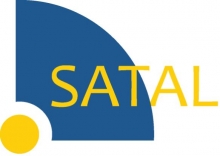For In-Person and Online Courses Assessment
The SATAL team can help you collect the data you need to gauge what helps student learning in your class and determine what else they need to succeed.
A. In the SATAL program, we implement a Mid-Semester Feedback (MSF) tool consisting of three questions, as shown below, following the Think-Pair-Share approach. Also, the instructor could suggest adding more questions based on their interest. For, e.g., we have courses using labor-based contracts, and instructors would like feedback specific to that.
1. What helps your learning in this class?
2. What suggestions do you have for the instructor to help your learning?
3. What actions are you taking to improve your learning? (self-assessment)
The class responds to these three questions individually, then in groups of 4-5 students through Qualtrics surveys, and finally, the students reconvene to provide a consensus on the responses. The MSF takes 30 minutes of class time at the beginning of class or the end, depending on the instructor's choice.
Once in the classroom, SATAL students set clear expectations for their peers:
- They will explain to their peers in the class that you/the instructor value their input/feedback and that you care about their learning and will respond/incorporate students’ feedback in the course as you see appropriate.
- Also, SATAL students will facilitate the input to make sure your students provide complete comments about how and why the teaching practices have been helpful and the why and how of their suggestions.
The only challenge is ensuring the students stay after the instructor leaves the class. Some students feel that the class is over and leave after the instructors.
B. Unless instructors would like to receive specific feedback on an intervention (specific practice), I suggest using the same questions found in the final course evaluation so the students get practice at providing feedback.
C. For small classes the following open-ended questions could be used based on instructors' specific interventions.
1. Describe your efforts and engagement in this course
2. Describe the learning environment in this course
3. Describe the instructor’s interactions with students
4. Describe the instructor’s responses to your work
5. Please assess the overall effectiveness of the instructor and explain your reasoning.
6. Please assess the overall quality of the course and explain your reasoning.
D. A classroom observation using a validated tool provides the quantitative data to complement the student feedback for a holistic approach to teaching.
The Classroom Observation Protocol for Undergraduate STEM (COPUS) is a tool to collect information about what is happening in the classroom (Smith et al. 2013 CBE-LSE). Throughout a class period, instructor and student behaviors and interactions are observed over two minute time intervals. Data are then analyzed and reported in a document noting how much time (as a percentage of two-minute intervals) each of the behaviors and interactions was observed. These data help instructors identify how much time is spent on each behavior and their practices utilized during class time (Reisner, 2020). The COPUS observation involves videotaping the class session to be able to revise the codes once the session is over. The video recording is available for instructors to request through a Box link. Here are some guidelines on how to use the COPUS data. Moreover, SATAL interns will map the instructor-student and/or student-student interaction during the observation [sample map].
Resources:
Closing the Assessment Cycle COPUS results presentation slides.pdf
SATAL Mid-Semester Feedback Interpretation Guide
--> Gathering Feedback During the Class Session
For Students: A quick survey will provide insight into how your students are coping with the changes implemented and what they need to succeed.
1) Using the "chat function" and can be paired with the Quality Matters rubric.
|
A 3-2-1 assessment using the chat box feature at the end of the class session if you feel you have the capacity to do this (e.g., 3 things you learned, 2 questions you still have, 1 action you are going to take). Zoom gives you the option to download the chat feature immediately after the event and you can then analyze the answers to these questions later. |
2) Using the Catcourses Quiz function or Qualtrics surveys.
|
1) What is working for you, and what isn’t? |
For Faculty: Advise for gathering feedback during significant disruptions
|
1) What did I do as an instructor to reduce student apprehension and anxiety during this time of disruption? What might I do more of next time? 2) Which course modifications were most/least successful in terms of my ability to: 3) What (specifically) worked well? 4) What unexpected student, instructor, and/or TA needs did I encounter? What did I learn from those experiences? 5) What (if anything) might I do differently in the future to build flexibility into my course, in case of other (hopefully less significant) disruptions to my teaching? 6) Given my students’ experience in my course this semester, what adjustments or special considerations should be made for AY2020-21 courses? For example, is there an anticipated impact on student readiness for the next course in a specific sequence? |
--> Course Assessment Rubrics:
--> Syllabus Assessment Rubric:
Univeristy of Virginia: Syllabus Rubric
-0-0-0-0-0-0-0-0-0-0-0-0-0-
Make Assessment Routine
What are the advantages of assessing throughout the semester?
(1) Improved understanding of learning needs.
(2) Opportunity for structured dialogue about teaching and learning with students.
(3) Evidence for teaching effectiveness portfolio/education research.
Assisting with Data Collection
Students working for SATAL are trained to gather, analyze and report indirect evidence in support of student learning outcomes. SATAL students can lead a number of assessment support, depending on the type of feedback instructors or programs want to obtain (see options below).
Class Assessment Options
A growing body of research stresses the important role that prior knowledge plays in student learning. Instructors who seek this prior knowledge are taking a very direct interest in the students. If instructors expose what students already know, they will have more success in attaching new knowledge to the schematic frameworks that students bring to class. Capturing students’ questions at the beginning of the semester also provides an interesting way to refine the curriculum around student needs (Fleming, 2003).
The data collected through needs assessment tools will benefit instructors and students alike:
1) It will provide students with a clear and understandable vision of the learning target.
2) It will guide instructors to shape assignments to develop the target skills and concepts that students find most challenging.
3) Instructors will identify what activities engage students most productively.
4) What interventions advance student progress.
Source: Fleming, Neil. Establishing Rapport: Personal Interaction and Learning . Idea Paper # 39.IDEA Center Website.
Research shows that mid-course feedback activities improve the instructional experience for both faculty and students. The best result is when faculty seek mid-course feedback, discuss it in class, and then act on it.
Mid-course feedback: (1) allow students to reflect on course goals and individual progress, (2) inform the instructor about what is working and not working in the course, and (3) recognize that the instructor cares about their learning. Midsemester feedback is a tool to give instructors and students information on how the class is going and what might be done to improve the learning environment. Request SATAL services to discover students' concerns before it's too late and keep results confidential.
The following links will provide more information on mid-course evaluations: North Carolina State University, Office of Faculty Development: Mid-Semester Evaluations
An exit survey/interview is usually conducted with graduating students to assess what should be improved, changed, or remain intact. More so, a class/ program can use exit interviews to reduce absenteeism, improve innovation, and increase engagement and retention. It is important for each class/ program to customize its own exit interview according to its own needs.
Class Assessment Tools Samples
Surveys of General Applicability
- Class Entry Survey
- Entry Survey (Online Option)
- Mid-Course Feedback
- Exit Survey
- Samples of mid-semester assessment from other universities, University of Central Florida , University of Southern Maine .
How to respond to feedback results
| Discipline Specific Tools |
Entry Survey1 |
Mid-Course Feedbackl2 |
Exit Survey3 |
|---|---|---|---|
| School of Social Sciences, Humanities and Arts | WRI 101 | BIO 001 | |
| School of Natural Sciences |
PHYS 008 (abridged version) |
||
| School of Engineering | ME 021 |





